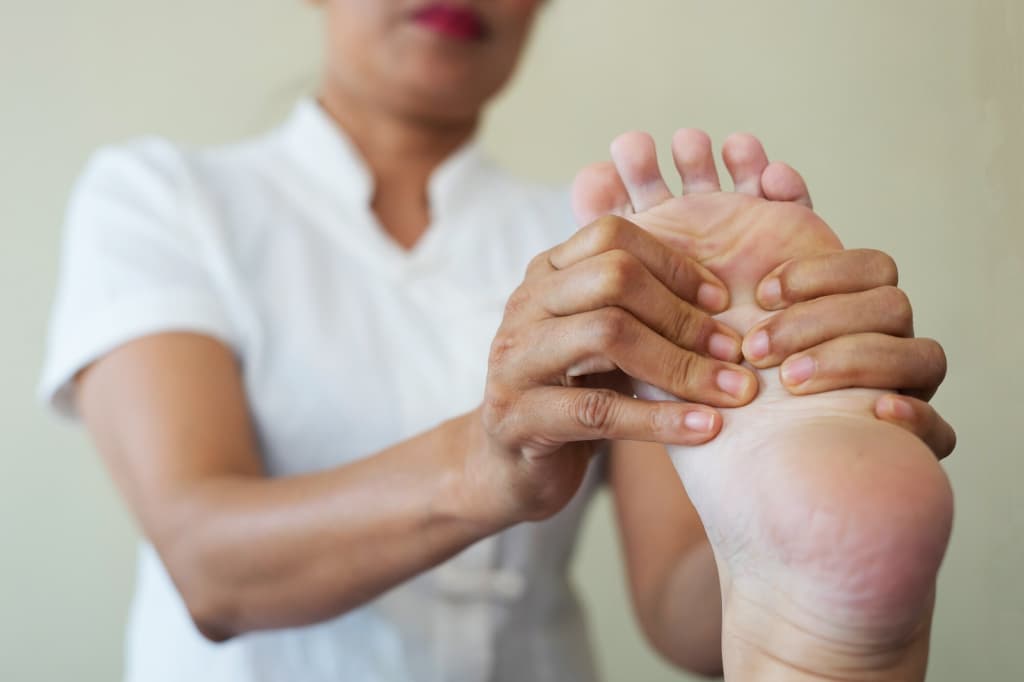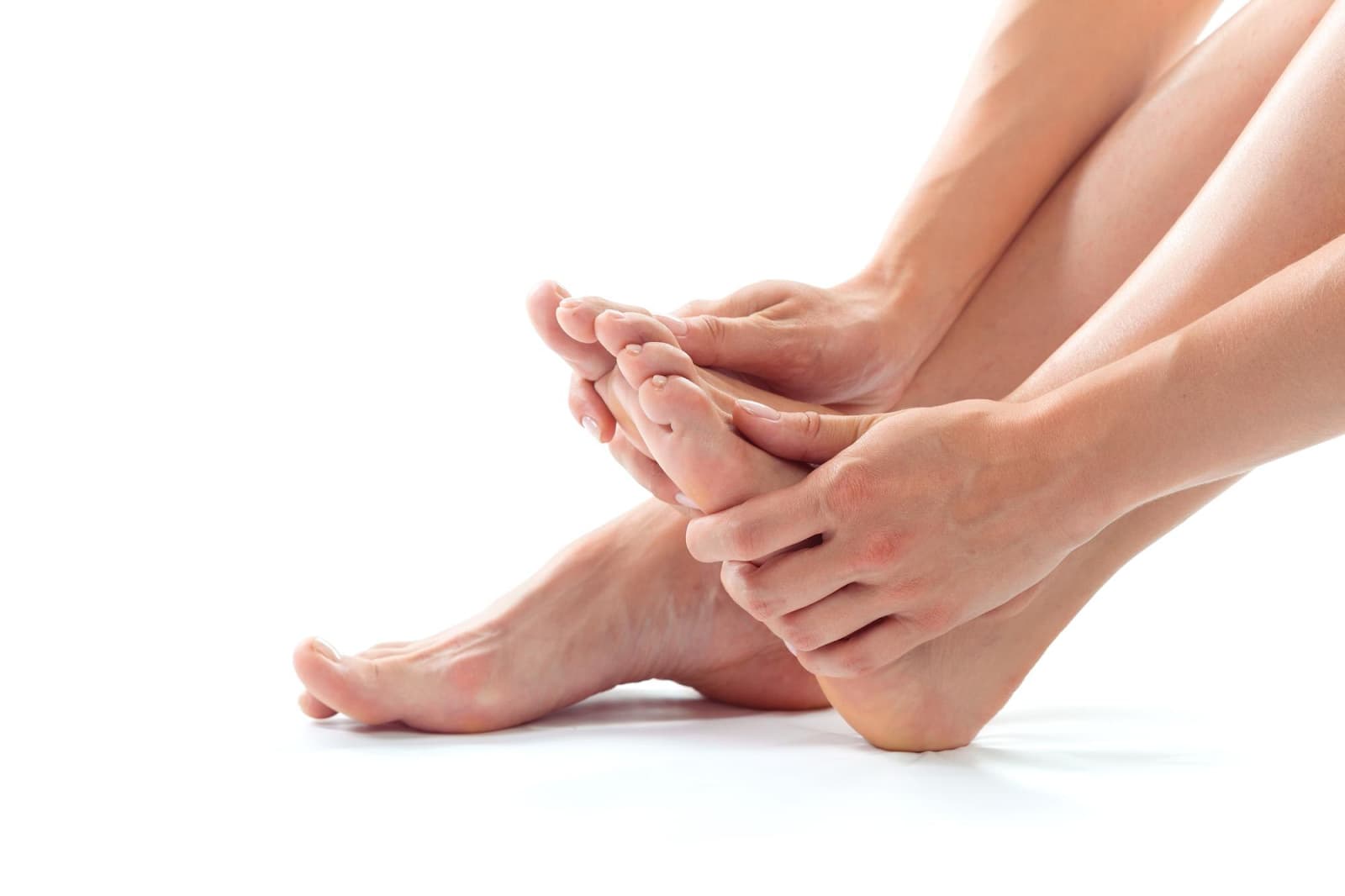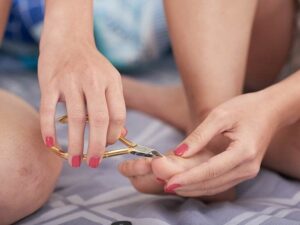The Lisfranc joint, also known as the tarsometatarsal joints, is a critical part of the foot’s anatomy. Examining your foot from a top view, nestled near the ankle joint, you’ll find some distinct bony protrusions situated horizontally across the foot. These structures mark the location of the Lisfranc joint, which spans the entire width of the foot.
The role of the Lisfranc joint is not limited to just contributing to our foot’s overall anatomy. It also performs a crucial task of maintaining the height and contour of the arch of our foot. This is why the Lisfranc joint incorporates an intricate network of bones and ligaments.
Any accidental twisting motion to this area, which could occur during a stumble, a misstep, or a fall, can potentially wreak havoc on this joint. Such an incident can lead to severe damage, such as fractures or dislocation of the bones, or spraining or tearing of the ligaments that hold the joint together.
Key Questions Addressed in this Article:
- What defines the complexity and debilitation of this particular injury?;
- What factors contribute to and elevate the risk of such injuries?;
- What variations of this injury exist, and how are they characterized?;
- How do symptoms, including bruising, contribute to both diagnosis and treatment?;
- What indicators of bruising related to this injury should individuals be mindful of?;
- What imaging methods are employed in diagnosing Lisfranc injuries?;
- What treatment paths are available for these injuries, contingent upon their severity?;
- What potential long-term consequences might result from neglecting a Lisfranc injury?;
- Why is it imperative to promptly intervene and provide comprehensive care for optimal outcomes in managing Lisfranc injuries?
Deciphering the Causes and Risk Factors for Lisfranc Injuries
The Lisfranc joint, a complex assembly of bones and ligaments, is vulnerable to severe and debilitating injuries, typically due to a forceful twisting motion paired with a downward or upward displacement of the foot’s mid region. The onset of such injuries is often abrupt and distressing, usually resulting from a traumatic incident that can be definitively traced back.
Three primary forms of Lisfranc injuries are widely recognized, each with its unique characteristics and implications:
- Ligament Sprains or Ruptures: These injuries culminate in a drastic instability of the midfoot, compromising its structural integrity;
- Lisfranc Fractures: These could manifest as avulsion fractures—where a fragment of bone is abruptly detached—or regular breaks in the bone structure;
- Dislocation: This refers to a scenario where the bones are abruptly displaced from their customary positions.
Intriguingly, these different kinds of injuries may coincide, adding to the complexity and severity of the condition.
Common scenarios conducive to Lisfranc injuries include, but are not limited to:
- Engaging in high-impact sports like football, rugby, wakeboarding, snowboarding, among others;
- Experiencing a simple twist and fall incident where an individual stumbles over their foot;
- Suffering a direct trauma from an imposing fall or when a heavy object lands on the foot unexpectedly.
These insights underline the importance of exercising caution and maintaining robust foot health.
Identifying Lisfranc Injuries: Tell-tale Symptoms
Lisfranc injuries, despite their serious nature, are often mistaken for commonplace sprains due to the similar circumstances leading to their occurrence—such as simple falls. However, it is crucial to differentiate between the two, considering Lisfranc injuries require extensive healing time and potentially surgical intervention.
Notable symptoms associated with Lisfranc injuries encompass:
- Persistent pain localized in the midfoot, worsening with standing, walking, or exertive activities;
- Difficulty or a complete inability to bear weight;
- Noticeable swelling pervading the top of the foot, often extending to the toes and the foot’s underside;
- Bruising, typically evident on the top and bottom of the foot in the arch region. However, it’s important to note that bruising may not always materialize;
- Numbness and a tingling sensation in the midfoot and toes;
- An unusual broadening of the midfoot.
Accurate Diagnosis: The First Step Towards Recovery
Diagnosing Lisfranc injuries can present a challenge due to their similarity to other foot-related ailments. Nevertheless, securing an accurate diagnosis is indispensable in kickstarting an efficacious treatment plan.
Professional health care providers, such as podiatrists, employ a comprehensive diagnostic procedure that involves analyzing the patient’s symptoms, scrutinizing the history of the injury, and conducting an exhaustive physical examination.
In case of a suspected Lisfranc injury, further investigations may be enlisted for added clarity. These may involve:
- X-ray imaging: To visualize the bone structure in the foot and detect any potential fractures;
- CT scans: Offering a more detailed view of the bones and helping identify fractures more definitively;
- MRI: To evaluate any ligament damage and confirm the diagnosis.

Navigating the Path to Recovery: Effective Treatment Strategies
The aftermath of a Lisfranc injury can be a challenging phase, primarily due to its intricate nature and troublesome location. Most treatment regimes necessitate the use of a special protective shoe or boot, often referred to as a “moon boot”, for an extended duration. This is usually supplemented by a dedicated rehabilitation plan that includes appropriate footwear and assistive devices to support the healing process.
As with most injuries, the recovery timeline for a Lisfranc injury is largely dictated by the injury’s severity. However, early detection and appropriate treatment can significantly enhance the recovery journey.
A few strategies to manage symptoms and expedite the healing process include:
- The RICE Principle: This entails Rest, Ice, Compression, and Elevation. The strategy advocates for proper rest, applying ice to the affected area, using a compression bandage, and elevating the foot to manage swelling and pain;
- Pain Management: Over-the-counter pain medications may be recommended to assist with pain relief
In some severe cases, surgical intervention may be required. The procedure essentially aims to restore the normal alignment of the midfoot and bolster its stability.
Potential Complications of Neglecting a Lisfranc Injury
Ignoring a Lisfranc injury can have far-reaching consequences. Some of the potential complications include:
- Compartment Syndrome: This is a dangerous condition where pressure buildup within the foot’s tissues necessitates immediate surgery to relieve the pressure and prevent tissue damage;
- Post-Traumatic Arthritis: This form of accelerated osteoarthritis is a common outcome of untreated Lisfranc injuries;
- Delayed healing: Neglecting timely treatment can protract the already lengthy recovery process, hampering the resumption of sports and routine activities;
- Lifestyle impact: The prolonged healing time associated with Lisfranc injuries can lead to considerable lifestyle disruptions.
Conclusion
In conclusion, Lisfranc injuries, especially in the context of hypermobile feet, represent a complex spectrum of midfoot trauma that necessitates prompt recognition and appropriate management. Understanding the significance of bruising in diagnosing Lisfranc injuries, particularly in individuals with hypermobile feet, is crucial for ensuring timely intervention and optimal outcomes. By addressing the causes, symptoms, diagnosis, and treatment options associated with Lisfranc injuries in the context of hypermobile feet, individuals can take proactive steps towards recovery and restoration of foot function. Prioritizing early intervention and comprehensive care, especially in cases of hypermobile feet, is paramount in mitigating the long-term effects of Lisfranc injuries and promoting overall foot health and well-being.


